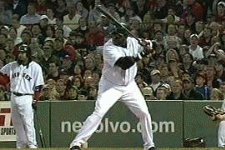Have a great day!
Original Post
Replies sorted oldest to newest
quote:Originally posted by BlueDog:
Agreed....
The hands and arms need to begin moving before the bottom half......This encourages a rear hip load and gives the hitter momentum producing activity....
When the hands move first, watch what the back hip does...


quote:The key is the ability to implement the hands in a linear fashion with the rotation of your feet.
quote:The hands need to fire at the same time as the back heel turns
quote:Stance-weight balanced 50/50
Load-weight either 20/80 or 30/70
Contact point 50/50
extension 60/40
quote:so squish the bug? and as one squishes the bug, his hands to work on a line to the ball?
quote:Now if you let your hands rotate in a circle, you basically swing a purse at the ball.
quote:Originally posted by Diablo con Huevos:
Power-
Thanks for the in depth explanation...
quote:They are only moving in a circular path because they are attached to the body by way of the arms.
quote:The hands are not contributing to the swing at this point other than helping to find the plane of the pitch and to move the bat to the slot by way of hand torque.
quote:This path is circular to some extent from top to bottom, but not around in a circle as in away from the body and back.
quote:RIGHT! just like when you hammer a nail in, the head travels on a circular path... even though it is only covering about 90 degrees of circular path, it is still on circular path... nothing has to make a complete revolution to be on a "circular path."
quote:Originally posted by Old School79:
This has been a great thread. Everyone has made good points. Rudy Jramillo, I believe teaches what Diablo speaks of: The pure rotational swing. Where as Dave Hudgins teaches: To Implement the hands in a linear path with rotation.
They are both considered two of the best hitting instructors on the planet, simple as it gets. As powertoallfields said: We are both right to an extent. Just as you have different styles of hitters, the same can be said with coaching techniques.
As instructors it is our job to adapt rotation and hand path to each individaul hitter as needed to make him a better player, this will not be the same for every player, nor should it be.
quote:I am talking about the motion that moves the bathead toward the Catcher. Is that what you are talking about?